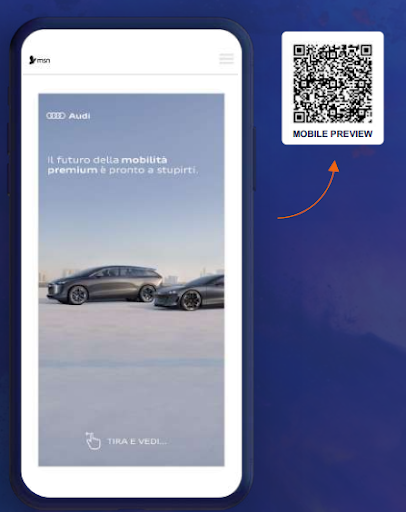The Art of Brand Storytelling: How to Do It Right (Plus Real Brand Examples)

In a media-saturated world, where consumers are exposed to 4,000 to 10,000 ads daily, brand storytelling has become a vital strategy for cutting through the noise and capturing attention.
Brand storytelling is more than just sharing a company’s history or mission; it’s about creating emotional connections that resonate deeply with audiences. Research shows that emotionally engaged consumers are 2.4 times more likely to stick with a brand and make repeat purchases.
Stories make brands more relatable and memorable, helping them stand out in a crowded market. They simplify complex ideas and convey a brand’s values, mission, and vision in an engaging and impactful way.
Successful brand storytelling answers two critical questions: Why should the audience care? And why should they share? Let’s drill down into the concept of brand storytelling and how to do it effectively.
What is Brand Storytelling?
Brand storytelling is a marketing strategy that uses narrative to connect with the target audience. Unlike traditional marketing, which may focus on promoting a product’s features or a discount offer, brand storytelling taps into the age-old part of human nature that connects to stories.
Brand storytelling can be achieved in different ways, whether static video ads or interactive digital storytelling experiences. Brand stories can be a short tappable video clip on a mobile phone, a multi-video series of YouTube commercials on a specific theme, or anything in between.
Great brand storytelling helps make your brand relatable, human, and memorable, which increases brand awareness, boosts engagement, and ultimately leads to increased sales.
At its core, brand storytelling aims to:
- Evoke emotions
- Present your brand’s values
- Create a lasting impression
- Build customer loyalty
Why is Brand Storytelling Important?
In an environment where consumers encounter ads almost every waking moment, storytelling is a tool to help differentiate your brand in a crowded market. According to a study by Headstream, 55% of consumers are more likely to buy from a brand they love if they relate to its story, and 44% will share that story with others, enhancing your brand’s reach.
Creating strong emotional connections through storytelling significantly enhances your brand’s perception. In fact, emotionally connected customers are 52% more valuable to a company than merely satisfied customers.
How Does Brand Storytelling Differ from Traditional Marketing?
Traditional marketing typically involves direct promotion and sales efforts, such as product advertisements, discounts, and calls to action. The primary goal is immediate conversion – getting consumers to purchase a product or service as quickly as possible.
On the other hand, brand storytelling emphasizes building a deeper connection with the audience by sharing a story that in some way relates to the brand’s journey, identity, values, or message. Instead of pushing for immediate sales, brand storytelling creates a narrative that resonates emotionally with consumers, helping audiences to identify with the brand, and building awareness and trust that supports a longer-term connection. Brand storytelling strategy might involve content marketing, native advertising, or omnichannel marketing campaigns that keep the story going across multiple touchpoints and media.

How Should You Incorporate Brand Storytelling into Your Marketing Strategy?
Stories are not just told; they are received. Great storytellers focus on the listener. To effectively incorporate brand storytelling in your marketing efforts, you’ll need to transition from a product-centric approach to a customer-centric one. But how?
- Define your brand’s core values and mission: Understanding what your brand stands for and what it seeks to achieve will guide the narratives you create. For instance, if sustainability is a core value, your stories should reflect that value and communicate your commitment to it.
- Know your audience: Conduct thorough research to identify your target audience’s demographics, preferences, pain points, and aspirations. Tailor your stories to resonate with these insights, ensuring that the narratives you create are not just about your brand but also how it relates to your customers’ lives and experiences.
- Build authentic and relatable stories: Focus on telling genuine stories that align with your brand’s values and mission. These could be about your brand’s journey, the challenges you’ve overcome, customer success stories, or your brand’s impact. Brand stories don’t always have to focus directly on the brand. Metaphors, fables, and songs can all be good tools to weave a more subtle narrative.
- Use multiple channels for storytelling: Social media platforms, blogs, video content, podcasts, native ads, and email campaigns are all effective mediums for storytelling. Each platform offers unique opportunities to engage your audience in different ways, whether through visual storytelling on Instagram, in-depth narratives on your blog, or customer testimonials shared via email.
- Make your brand story the foundation of your marketing: Your brand’s story should be the consistent thread that runs through all your marketing efforts. Whether launching a new product, creating content for social media, or developing an advertising campaign, your brand’s narrative should be at the core. This consistency reinforces your brand identity and helps build a cohesive brand image over time.
- Engage with your audience and evolve your story: Storytelling is not a one-time effort; it’s an ongoing process that changes with your brand and audience. Immerse your audience by encouraging them to share their stories and experiences with your brand. User-generated content can add authenticity and create a sense of community around your brand. Additionally, be prepared to evolve your brand’s narrative as your company grows and market dynamics change.
- Measure the impact of your storytelling: Finally, assess the effectiveness of your storytelling efforts by tracking relevant metrics such as audience engagement, brand sentiment, and conversion rates. Use these insights to refine your approach, ensuring that your storytelling continues to resonate with your audience and drive desired outcomes.
Elements of Effective Brand Storytelling
There are 5 essential elements to include when you’re incorporating storytelling into your brand:
1. Authenticity
Your potential customers can feel fake content from a mile away.
Your story must be genuine and reflect your brand’s values, mission, and vision. Consumers are increasingly savvy and can easily detect inauthenticity, eroding trust and damaging your brand’s reputation. By being honest and transparent in your storytelling, you build credibility and a deeper connection with your audience. For example, sharing the real challenges your brand has faced and how you’ve overcome them can make your story more relatable and inspiring.
2. Relatability
Relatability is about making your audience see themselves in your story. Create stories that speak to your audience’s needs, desires, and experiences through your brand. When consumers can relate to your brand personally, they’re likelier to develop a lasting emotional connection. To achieve this, consider your target audience’s demographics, psychographics, and behavioral traits. Craft stories that mirror their experiences, aspirations, and challenges.
3. Emotional connection
Tapping into feelings that resonate with your target market can elevate your brand’s message and create a lasting impact. Whether joy, inspiration, empathy, or nostalgia, your story should evoke emotions that align with your brand’s identity and values. This emotional connection makes your story memorable and motivates your audience to take action, whether it’s making a purchase, sharing your content, or becoming a loyal advocate for your brand. For example, brands like Dove have successfully used emotional storytelling to challenge societal norms and connect with consumers on a deeper level (and we cover that further down, so keep reading!)
4. Simplicity
In a world where consumers are constantly bombarded with information, simplicity is key. Your brand’s story should be clear, concise, and understandable. Avoid overcomplicating your narrative with jargon or unnecessary details that could dilute your message. A simple, straightforward story is more likely to be remembered and shared. To achieve simplicity, focus on a compelling message encapsulating your brand’s essence.
5. Consistency
Your brand story should be consistent across all platforms and touchpoints, including social media, your website, online ad campaigns, and customer interactions. Consistent storytelling reinforces your brand’s identity and ensures that your audience hears the same message, regardless of where or how they engage with your brand. This consistency builds trust and helps solidify your brand’s position in the minds of consumers.
For example, Coca-Cola’s consistent message of happiness and togetherness has been a hallmark of its branding for over a decade, making it one of the most recognizable brands in the world!
How to Write a Compelling Brand Story
Now that you know what to do, let’s discuss the how! Here’s our 7-step checklist to brand storytelling success:
Step 1: Start by asking the crucial question, why does your brand exist?
What is your brand’s mission? What change are you trying to make in the world? Your brand’s purpose should be the cornerstone of your story, providing direction and meaning to everything you do.
Step 2: Know who you’re talking to.
Research your audience to understand their values, pain points, and motivations. What do they care about? What challenges do they face? By aligning your brand’s story with your audience’s needs and desires, you create a compelling and relevant narrative.
Step 3: Identify your brand’s unique voice and personality that reflects its identity.
Is your brand fun and playful or serious and professional? Define the characteristics that embody your brand and use them consistently throughout your story. This persona should be evident in your tone, language, and interactions with your audience.
Step 4: Create a narrative structure.
Use the classic storytelling arc – beginning, middle, and end – to shape your brand’s narrative. Start with an introduction that sets the stage, move into the challenges or conflicts your brand has faced, and conclude with the resolution, highlighting how your brand overcomes obstacles to achieve its goals.
Step 5: Use images, videos, and graphics to illustrate key moments.
These elements make your story more engaging and help convey emotions and messages that words alone might not capture. For instance, a behind-the-scenes video showing your product development process can add depth to your story.
Step 6: Utilize testimonials.
Authentic stories from real customers are incredibly powerful. Share testimonials and case studies demonstrating how your brand has positively impacted people’s lives. These real-world examples add credibility and allow potential customers to see themselves in your narrative.
Step 7: Be authentic.
We’ve said it at least 5 times already, but it bears repeating. Authenticity is non-negotiable. Avoid exaggeration or embellishment. The more authentic your story, the more likely it is to build trust and resonate with your audience. Stay true to your brand’s core values and mission throughout the storytelling process.
5 Brands That Got Storytelling Right
Audi and Outbrain
Audi partnered with Outbrain’s Brand Studio to create a unique storytelling experience that got results. Using interactive elements, Brand Studio’s designers created a custom digital advertising format that opened two paths for audience engagement.
Users who swiped on the Audi ad were connected to a 15-second video, allowing them to learn more about the brand’s concept car, technology, and innovation. Users who tapped on the ad were taken straight to Audi’s site. This multi-touch function helped maximize the potential of user engagement while introducing multiple pieces of content, all through one ad experience.
Interactive storytelling works. The campaign achieved an incredible 79% higher engagement than comparable ad formats in the category, and over 4% engagement rates. The combination of brand storytelling and interactivity was the key to successfully connecting with the audience.

Nike
With its iconic “Just Do It” campaign, Nike tells stories of determination and overcoming challenges. This beautifully informs the audience of Nike’s brand values – a story of motivation and empowerment. The campaign’s success comes down to its ability to speak to the audience on an emotional level, making it one of the most memorable brand stories today.
Airbnb
Airbnb’s “Belong Anywhere” campaign focused on creating a sense of belonging no matter where you are. The campaign used real customer stories to highlight how the platform allows travelers to feel at home anywhere.
The narrative of belonging was integral to the campaign, positioning Airbnb not just as a service for finding a place to stay, but as a facilitator of meaningful and authentic travel experiences.
Patagonia Provisions
Patagonia Provisions integrates storytelling into every part of its online store. The brand collaborates with small-scale farmers and fishers who prioritize environmental conservation, promoting their stories about how products are sourced. Through these narratives, customers learn about sustainable farming and make more informed food choices. At the same time, the connection with the audience is made deeper via stories deeply rooted in the brand’s values.

Rivian
An American electric vehicle (EV) manufacturer, Rivian has rapidly made a name for itself through compelling brand storytelling centered on adventure, sustainability, and a commitment to a better future. Rivian’s storytelling highlights its efforts to reduce carbon emissions and promote renewable energy. For example, one of Rivian’s standout storytelling campaigns is “Keep the World Adventurous Forever”, a series of videos that go behind the scenes on the company’s values, product development, and thirst for adventure.
You’re a brand storytelling genius – you just didn’t know it yet!
Brand storytelling is so much more than a marketing tactic. Crafting authentic and emotionally resonant narratives can set your brand apart and help you build a loyal following, just like Nike, Airbnb, Audi, and many more. Remember, the best brand stories don’t just showcase your products or services, they also reflect your values and connect with your audience on a deeper level. If you’re not sure when the right time is to start brand storytelling, here’s your answer. It’s now.


